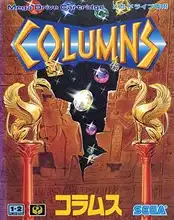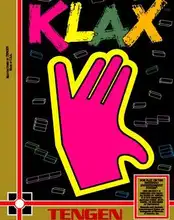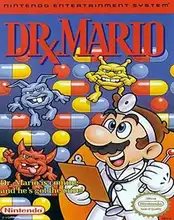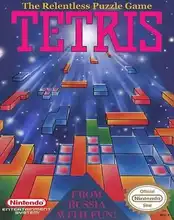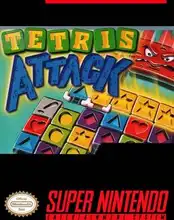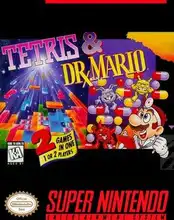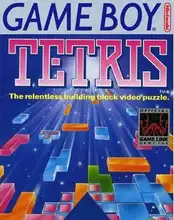The digital playground of the past was filled with wonders, but few concepts were as instantly addictive and universally appealing as the simple act of manipulating shapes tumbling down a screen. This is the enduring charm of the falling block puzzle genre, a cornerstone of retro gaming that continues to capture minds decades later.
These aren't just games; they're exercises in spatial reasoning under pressure, tests of reflexes, and pathways to that coveted "flow state" where time melts away. While one famous name often dominates the conversation, the world of falling block puzzle games is much richer and more varied than you might think, especially when you look back at the pixelated past.
What Makes a Falling Block Puzzle Tick?
At its core, a falling block puzzle game is beautifully simple. Pieces, usually made of connected blocks, descend from the top of the play area. Your goal is to rotate and move these pieces as they fall to form complete horizontal lines at the bottom. Once a line is complete, it vanishes, making space for more pieces and earning you points. The challenge? The pieces fall faster, and the pile grows higher. Game over when the blocks stack to the top!
It's a concept that seems almost primal in its simplicity, yet offers endless strategic depth. Do you go for single line clears, or risk building up for a massive multi-line score bonus? Do you play defensively, keeping the stack low, or aggressively, aiming for high scores?
Beyond the Obvious: Retro Falling Block Gems
Okay, let's address the elephant in the room. When most people think of falling blocks, they think of that game with the seven iconic shapes. And rightly so – it's a legend! But the genre quickly exploded with variations and unique takes in the late 80s and 90s.
Many developers created their own falling block puzzle experiences, sometimes due to innovation, sometimes due to, well, inspiration. These games often introduced new block shapes, different clearing mechanics (matching colors or types instead of just lines), or unique power-ups and challenges.
Think about games like:
- Columns: Where you matched falling blocks of the same color, vertically, horizontally, or diagonally. The jewels were mesmerizing!
- Dr. Mario: A classic Nintendo take where you used colored capsules to eliminate viruses of matching colors. Simple, medical-themed fun!
- Various shareware and arcade titles that experimented with different grids, speeds, and special blocks.
These games proved the core concept was incredibly flexible, leading to a diverse landscape of falling block fun in the retro era.
Why Do We Keep Coming Back?
There's something undeniably magnetic about dropping blocks. Is it the satisfying thunk when a piece lands? The visual reward of a perfectly cleared line? The escalating tension as the speed increases?
- Simple to Learn, Hard to Master: The rules take seconds to grasp, but true mastery requires hours of practice, quick thinking, and planning ahead.
- Pure, Unadulterated Gameplay: There's rarely a complex story or character to worry about. It's just you, the blocks, and the ever-present threat of topping out.
- The Flow State: Getting "in the zone" with a falling block puzzle is easy. Your mind clears, focusing only on the descending shapes and the gaps below. It's almost meditative, until the speed ramps up!
- Endless Replayability: No two games are ever exactly alike. The random sequence of blocks ensures a fresh challenge every time you play.
This simple, elegant design is why falling block puzzle games have endured for so long and remain a beloved part of retro gaming culture.
Reliving the Retro Drops Today
Feeling nostalgic? The good news is that the spirit of the classic falling block puzzle lives on, and often, the original experiences are surprisingly accessible.
- Emulation: For PC classics, platforms like DOSBox can let you revisit old shareware favorites.
- Digital Stores: Services like GOG.com occasionally feature collections or individual classic puzzle titles.
- Browser Archives: The Internet Archive has a treasure trove of playable retro games, including many falling block variations.
- Modern Clones & Homages: Many modern mobile and PC games adopt the "falling block puzzle" moniker, sometimes to avoid copyright issues (as seen in some modern apps), but often as a genuine tribute to the genre's pioneers. While shapes might differ slightly, the core addictive loop remains.
Whether you track down an original version or play a modern game built on the same principles, the fundamental joy of clearing lines is just as potent now as it was back then.
Frequently Asked Questions About Falling Block Puzzles
Q: Is "Falling Block Puzzle" just another name for Tetris? A: Not exactly. Tetris is the most famous example and the pioneer of the genre. "Falling Block Puzzle" is a broader term that describes the gameplay mechanic and includes many other games with similar rules but different shapes, clearing conditions, or themes.
Q: Why do some modern games use generic shapes instead of the classic Tile-Matching Puzzle Games pieces? A: The specific shapes and gameplay of Tetris are protected by copyright and trademark held by The Tetris Company. Developers of new games often create different shapes or rules to avoid legal issues, hence the use of generic terms like "Falling Block Puzzle."
Q: Are there any good retro Puzzle Games besides the really famous one? A: Absolutely! Games like Columns, Dr. Mario, and countless lesser-known titles from the arcade and early PC eras offered fun twists on the formula, focusing on color matching, different piece types, or unique game modes.
Q: Where can I play classic falling block puzzle games today? A: Check out platforms like GOG.com for official releases, use emulators like DOSBox for old PC titles, or explore archives like the Internet Archive which host many playable retro games directly in your browser.
The Blocks Keep Falling On
The falling block puzzle genre is a timeless testament to the power of simple, elegant game design. It doesn't need flashy graphics or complex stories to hook you; just some shapes, gravity, and your own quick wits. Decades on, the urge to rotate that tricky piece into the perfect spot and watch the lines disappear is as strong as ever. So go on, find your favorite version, clear some lines, and get lost in the simple, satisfying rhythm of the falling blocks.

